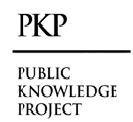Antioxidant (Nitric oxide radical scavenging and Hypochlorous acid scavenging), Antifungal Activity and Investigation of Secondary Metabolites of Alcea Rosea L. Flowers Using GC-MS Technique
Keywords:
Antioxidant, Radical scavenging, Antifungal Activity, Secondary Metabolites, Alcea Rosea LAbstract
Starch, gum, and extraordinarily high content of phenols show that Alcea rosea is an
important medicinal plant. Thirdly, This plant has been used in ancient times to cure all
kinds of ailments and is cultivated for trade. This work aimed at identifying the secondary
metabolites present in Alcea rosea L. flowers using the GC-MS analysis and to assess their
antioxidant activities as nitric oxide radical scavenging, hypochlorous acid scavenging
activities and antifungal activity. At the state-of-the-art Botanical laboratory, the
researchers used dried plantingredients that were purchased from the Babylonian markets.
They were milled using an electrical grinder until reduced to powder form and then put in
nylon bags and left at the laboratory temperature till required. Separation and identification
was done using the GC-MS. GC-MS analysis was performed with fused silica capillary
column, Trace GC Ultra/ISQ Single Quadruple MS Thermo Scientific. The antifungal
activity is assessed using the diameter of the inhibition zone, in millimeters (mm), for each
methanolic extract. Different antioxidant activity of Alcea rosea L. extracted in methanol,
ethanol and standards using nitric oxide radical scavenging the hypochlorous acid
scavenging. Different extract profiles that analysed were Crude, Ethanol fraction and
Standard recorded Nitric oxide radical scavenging 33.45 ± 2.07, 49.00 ± 3.05 and
Curcumin (standard) 87.60 ± 4.13 respectively. For recorded it was 176.00±5.00,
187.33±7.09 and Ascorbic acid (standard) 215.00 ± 8.93 respectively. The scavenging
results demonstrated that crude and other fractions have significantly higher percentage
inhibition against hypochlorous acid activity than the standard Mannitol. These results
confirm other studies for the identification of Alcea rosea as potential plant source for
active compounds for the treatment of some fungal diseases. Antifungal activity of
secondary metabolites of Alcea Rosea L. : Effectiveness of the methanolic crude extract,
ethanol fraction of Alcea rosea L. and standard antibiotics against four fungi and yeast. In
vitro Alcea Rosea L. compounds displayed a high degree of effectiveness against Fusarium
oxyporum ((24.08 ± 0.48 and 15.11 ± 0.49).
Downloads
References
Daulatabad CD, Jamkhandi AM. Althaea rosea seed oil-a rich source of ricinoleic acid. Journal of the Oil Technologists’ Association of India. 2000;32(1):8-9.
Kwiatkowska M, Stepinski D, Poplonska K. ‘Elaioplasts’ identified as lipotubuloids in Althaea rosea, Funkia sieboldiana and Vanilla planifolia contain lipid bodies connected with microtubules. Acta Soc Bot Pol. 2011;80(3):211-9.
Dudek M, Matławska I, Szkudlarek MA. Phenolic acids in the flowers of Althaea rosea var. nigra. Acta Pol Pharm. 2006;63(3):207-11.
Benbassat N, Yoncheva K, Hadjimitova V, Hristova N, Konstantinov S, Lambov N. Influence of the extraction solvent on antioxidant activity of Althaea officinalis L. root extracts. Cent Eur J Biol. 2014;9(2):182-8.
Ammar NM, El-Kashoury E, Abou El-Kassem LT, Abd ElHakeem RE. Evaluation of the phenolic content and antioxidant potential of Althaea rosea cultivated in Egypt. J Arab Soc Med Res. 2013;8(2):48-52.
Nair AG, Nagarajan S, Subramanian SS. Flavonoids of the flowers of Hibiscus abelmoschus and Althaea rosea. Cur Sci. 1964;33(14):431-2.
Khory RN, Katrak NN. Materia Medica of India and Their Therapeutics. Delhi: Neeraj Publishing House; 1981. p. 647.
Khare CP. Indian Medicinal Plants: An Illustrated Dictionary. Delhi: Heidelberg Publication; 2007. p. 40.
Abdel Salam NA, Ghazy NM, Shawky E, Sallam SM, Shenouda ML. Validated HPTLC method for dihydrokaempferol-4′-Oglucopyranoside quantitative determination in Alcea species. J Chromatogr Sci. 2018;56(6):518-23.
Hussain L, Akash MS, Tahir M, Rehman K, Ahmed KZ. Hepatoprotective effects of methanolic extract of Alcea rosea against acetaminophen-induced hepatotoxicity in mice. Bangladesh J Pharmacol. 2014;9(3):322-7.
Berger PJ, Sanders EH, Gardner PD, Negus NC. Phenolic plant compounds functioning as reproductive inhibitors in Microtus montanus. Science. 1977;195(4278):575-7.
Papiez M, Gancarczyk M, Bilińska B. The compounds from the hollyhock extract (Althaea rosea Cav. var. nigra) affect the aromatization in rat testicular cells in vivo and in vitro. Folia Histochem Cytobiol. 2002;40(4):353-9.
Eshete, M.A.; Molla, E.L. Cultural significance of medicinal plants in healing human ailments among Guji semi-pastoralist people, Suro Barguda District, Ethiopia. J. Ethnobiol. Ethnomed. 2021, 17, 1–18. [CrossRef]
Nadiro ˘glu, M.; Behçet, L.; Çakılcıo ˘glu, U. An ethnobotanical survey of medicinal plants in Karlıova (Bingöl-Turkey). Indian J. Tradit. Knowl. 2019, 18, 76–87.
Mohammed AS A-MA. The effect of extract of the leaves of Adhatodav asicia plant against some types of bacteria contaminating the wounds by using an allergy test. J Umm Salamah of Sci. 2007;4(1):47-54.
Himratul-Aznita WH, Mohd-Al-Faisal N, Fathilah A. Determination of the percentage inhibition of diameter growth (PIDG) of Piper betle crude aqueous extract against oral Candida species. J Med Plant Res. 2011;5(6):878-84.
Miller MJ, Sadowska-Krowicka H, Chotinaruemol S, Kakkis JL, Clark DA: Amelioration of chronic ileitis by nitric oxide synthase inhibition. J Pharmacol Exp Ther. 1993, 264 (1): 11-16.
Balavoine GG, Geletti YV: Peroxynitrite scavenging by different antioxidants. Part 1: convenient study. Nitric oxide. 1999, 3: 40-54.
Pedraza-Chaverrí J, Arriaga-Noblecía G, Medina-Campos ON: Hypochlorous acid scavenging capacity of garlic. Phytother Res. 2007, 21: 884-888.
Azab, A. Alcea: Traditional medicine, current research and future opportunities. Eur. Chem. Bull. 2016, 5, 505–514
Ertas, A.; Boga, M.; Gazioglu, I.; Yesil, Y.; Hasimi, N.; Ozaslan, C.; Yilmaz, H.; Kaplan, M. Fatty acid, essential oil and phenolic compositions of alcea pallida and alcea apterocarpa with antioxidant, anticholinesterase and antimicrobial activities. Chiang Mai J. Sci. 2016, 43, 1143–1153.
Uzunhisarcikli, M.E.; Vural, M. The taxonomic revision of Alcea and Althaea (Malvaceae) in Turkey. Turk. J. Bot. 2012, 36, 603–636.
Rezaeipour, N.; Jafari, F.; Rezaeizadeh, H.; Nasseri, M.; Kamalinejad, M.; Ghobadi, A.; Shamsipour, M.; Zargaran, A.; Ameri, A. Efficacy of a persian medicine herbal compound (Alcea digitata alef and Malva sylvestris l.) on prevention of radiation induced acute mucositis in patients with head and neck cancer: A pilot study. Int. J. Cancer Manag. 2017, 10, e8642.
Ahmadi, M.; Rad, A.K.; Rajaei, Z.; Mohammadian, N.; Tabasi, N.S. Alcea rosea root extract as a preventive and curative agent in ethylene glycol-induced urolithiasis in rats. Indian J. Pharmacol. 2012, 44, 304.
Gupta AK, Sauder DN, Shear NH. Antifungal agents: an overview. Part I. J American Academy Dermatol 1994; 30(5): 677-698.
Jeeva S, Kingston C, Kiruba S, Kannan D. Sacred forests-treasure trove of medicinal plants: a case study from south Travancore. In: Trivedi PC. (ed.) Indigenous medicinal plants. Jaipur: Pointer Publishers; 2007, p. 262-74.
Rana BK, Singh UP, Taneja. Antifungal activity and kinetics of inhibition by essential oil isolated from leaves of Aegle marmelos. J Ethnopharmacol 1997; 57: 29-34.
Kelmanson JE, Jager AK, Staden JV. Medicinal plants with antibacterial activity. J Pharmacol 2000; 69: 241-246.
Papiez MA. The influence of hollyhock extract administration on testicular function in rats. J Mol Histol. 2004;35(8-9):733- 40.
Khan H, S Mubarak M, Amin S. Antifungal potential of alkaloids as an emerging therapeutic target. Curr Drug Targets. 2017;18(16):1825-35.
Gurudeeban S, Ramanathan T, Satyavani K, Dhinesh T. Antimicrobial effect of coastal medicinal plant – Citrullus colocynthis against pathogenic microorganisms. Afr J Pure Appl Chem 2011;5(5):119–22.
Hadizadeh I, Peivastegan B, Kolahi M. Antifungal activity of Nettle (Urtica dioica L.), colocynth (Citrullus colocynthis L. Schrad), Oleander (Nerium oleander L.) and Konar (Ziziphus spina-christi L.) extracts on plants pathogenic fungi. Pak J Biol Sci 2009;12(1):58–63Morrissey JP, Osbourn AE. Fungal resistance to plant antibiotics as a mechanism of pathogenesis. Microbiol Mol Biol Rev. 1999;63(3):708-24.
Deising HB, Reimann S, Pascholati SF. Mechanisms and significance of fungicide resistance. Braz J Microbiol. 2008;39(2):286-95
Guinot P, Rogé A, Gargadennec A, Garcia M, Dupont D, Lecoeur E, et al. Dyeing plants screening: an approach to combine past heritage and present development. Color Technol. 2006;122(2):93-101.

Downloads
Published
How to Cite
Issue
Section
License

This work is licensed under a Creative Commons Attribution 4.0 International License.
Current Clinical and Medical Education













